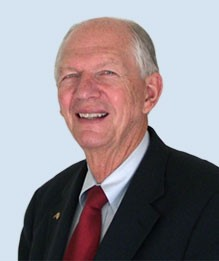An Interview With Author Rev. Dr. William Nelsen

Rev. Dr. William “Bill” Nelsen
Senior Consultant & Member
The Registry
(Editor’s Note: As a Senior Consultant and member of The Registry, this review highlights Bill’s contributions to this book. However, we also acknowledge the significant contributions of the book’s co-author Dr. Darrell Jodock.)
What is a key take away that a Registry member might glean from this book as they prepare to transition into an interim role?
Issues of diversity, equity, and justice are at the forefront of discussions in colleges, universities, and seminaries today—and in our entire society. The book addresses directly the challenges of divisions created in our society as a result of the changing demographics related to both racial and religious diversity. We point to ways in which people are embracing—rather than fearing—diversity on campuses and in communities. The book provides a great resource for on-campus discussions by staff, faculty, and students.
It seems many conversations about diversity, equity, and inclusion are understandably centered on race, ethnicity, gender, and sexuality. In what ways does your book, incorporating discussions about religion, faith, and spirituality, enrich that discussion?
As a result of changes in immigration policies over the last several decades, and as a result of large numbers of students from non-European countries studying on American campuses, religious diversity among students, and increasingly among faculty, has increased substantially. We speak directly to the need for people to engage with people of other religions, understanding the impact of beliefs and practices in the lives of others, while often understanding their own faiths better. Important commonalities are discovered. Also, race and religion are increasingly linked in relation to the need for overcoming individual biases and structural inequities.
As more Americans describe themselves as being secular or of no particular faith, what role do you envision faith will play going forward as a principle of equity and inclusion?
The book points to the importance of each of us developing a sense of “vocation” in life, a calling to serve the larger society, and that all of the major religions (without always labeling this calling as “vocation”) see this service to others as a critical part of their faith. And those who are secular often find their own pathways to ethical concerns and caring for others, so that those of faith and the “nones” can and must join together in positive service to society.
What was the one surprise that came to light in the writing of this book? Can you share an observation of something that you did not expect?
We were writing the book during the rapid spread of COVID throughout our nation, with more of our citizens dying from the disease than in any other nation. Much of this terrible result, in the analysis of many, came from a false understanding among many Americans of the concept of freedom. Freedom, correctly understood, in this country is not to be “free” by refusing to wear a mask, for example, because our freedom always is to be accompanied by responsibility—responsibility to care for the health of self and of others. In the book, we give attention to this important matter, pointing also to the guidance of faith to love and care for our neighbors.
Using the last decade as a rough measuring stick, what trends have you noted in the religious and spiritual lives of Americans since 2012?
Three trends are evident. (1) The percentage of persons active in churches and other faith expressions has declined. (2) Yet, those who have remained active are often more loyal in faith and devoted to the mission of the church. (3) Young people who have been turned off by religious organizations that failed to address issues of social justice, equity, and inclusion, have often remained influenced by spiritual and ethical guidance. And now many young adults are increasingly identifying with those religious organizations that are visibly committed to social justice and embracing diversity. Structures are still necessary for implementing change. The book points to a variety of important and specific ways that people can come together to serve the common good.
HIRE AN INTERIM
Searching for an Interim?
Please contact us for more information.

